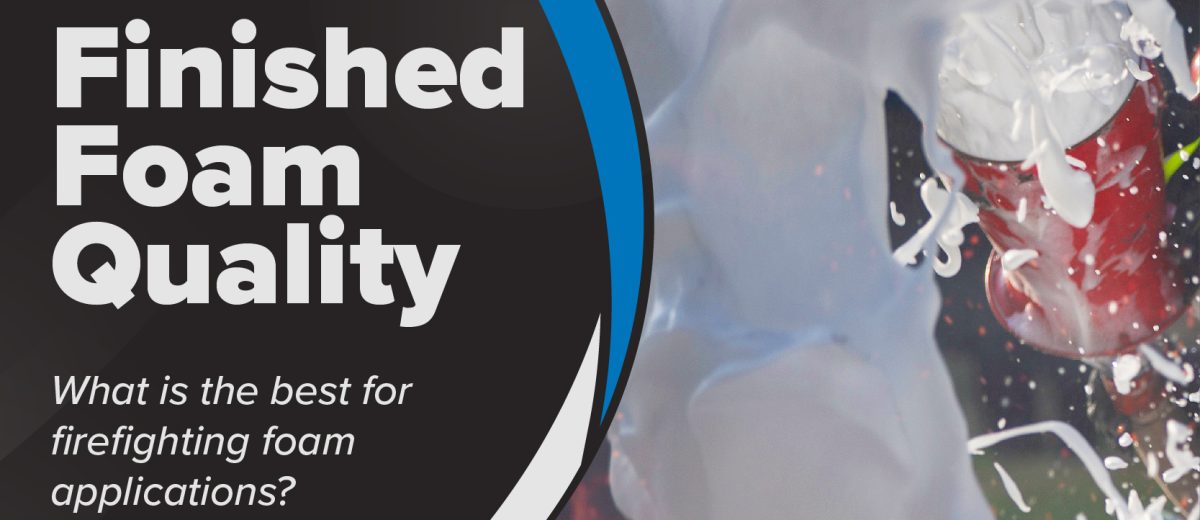What is the ideal finished foam quality for firefighting?
Finished-foam quality — a measure of durability or usefulness of a foam blanket — is measured two ways; expansion ratio and 25% drain time. Finished-foam quality is a function of the volume of air drawn into the nozzle and the amount of mechanical agitation that occurs in the nozzle or nozzle-foam tube.
Expansion ratio is a comparison of the original volume of foam solution versus the volume of finished foam produced after air is added at the nozzle tip or foam tube. Low expansion is defined as 1:1 to 20:1, medium expansion as 21:1 to 200:1, and high expansion is above a 200:1 ratio.
Drain time is a measure of how long it takes for foam solution (liquid) in the foam bubble blanket to drain out and revert to liquid. Commonly called “twenty-five percent drain time,” it is a measure of how much time it takes for 25% of the liquid to drain out of the foam bubble mass. This measurement indicates durability of a foam blanket against heat, how it will flow over fuel surfaces and around metal objects within a fuel configuration, and how long it remains useful as a vapor barrier. Typically, the longer the 25% drain time, the more heat resistant the foam blanket.
Why Does Finished Foam Quality Matter?
Why should we be concerned with finished-foam quality? Because specific finished-foam qualities are required to optimize flame knockdown and fuel vapor securing capability of SFFF agents.
Manufacturers of SFFF agents perform live-fire testing at third-party laboratories and in the field on mid- and large-size flammable-liquid fire props. Testing yields foam quality requirements that correlate to application rates. In other words, generating specific foam qualities optimize fire suppression and control performance for a specific brand and type SFFF agent.
In one example, an SFFF agent manufacturer publishes a minimum application rate of 0.3 gpm of foam solution per square feet of flammable liquid surface. The application rate should be applied on the fuel using a nozzle with an expansion ratio of 7.5:1, with a 25% drain time of 20 minutes, to be effective.
What does this mean? The fire service needs to choose nozzles wisely to optimize SFFF applications. Specifically understanding the foam quality required by their specific brand and type of SFFF and matching it to appropriate nozzles and aspirating foam tubes to get the job done.
In summary, as the fire industry moves away from legacy AFFF and transitions to new SFFF agents, testing, learning and development of tools and techniques will continue in support of the transition and provide tools to increase firefighter safety and reduce property damage.
